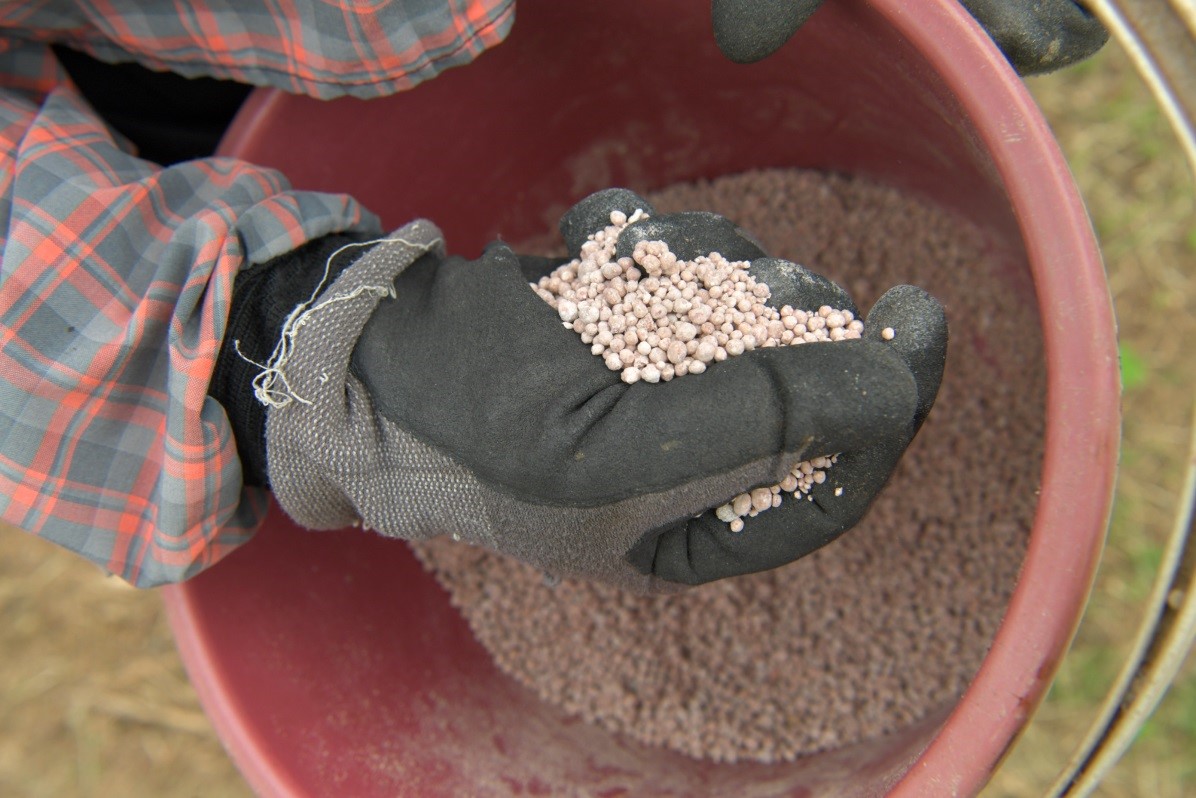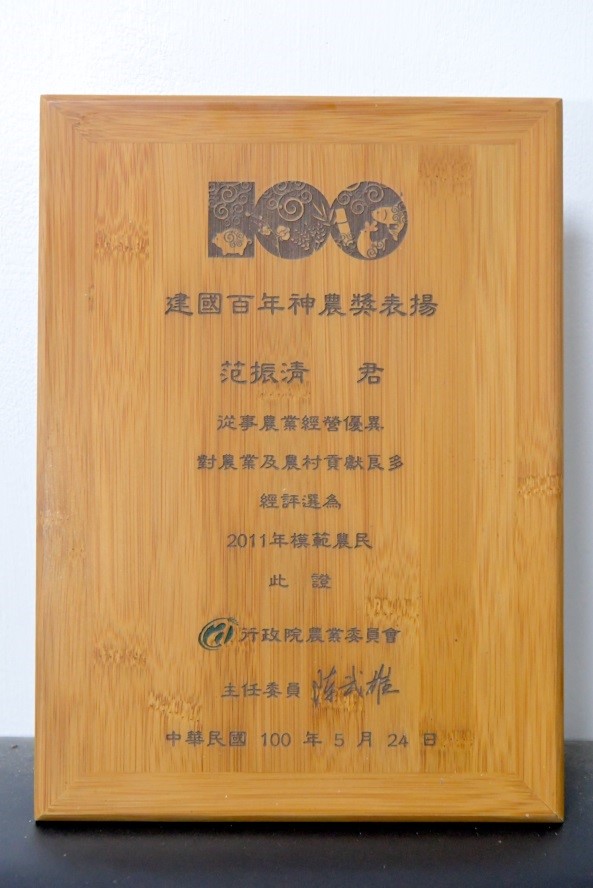Growing Top-quality Dragon Fruit with Good Intentions: An Interview with Dragon Fruit Expert Fan Chen-Ching
Oral Information/Fan, Chen-Ching; Jao, Huang Chieh; Chien Li-Sui Editor/Kuo, Yen-Feng Photographer/Lin, Jung-Yi
Dragon fruit, the fruit of a cactus, originates from regions around Brazil and Mexico. The Dutch introduced it to Taiwan in 1645. The fruit set of varieties at the time was low, and fruits of the varieties were small and inedible, which were the reasons why few people grew dragon fruit. In the early days, dragon fruit, mainly the variety with red skin and white flesh, was only grown in certain regions in Taichung, Changhua, and Nantou. Its attractive bright red appearance and durability made it popular as an offering on deity tables.
Returning Home to Inherit the Family Business and Taking on Challenges
Fan Chen-Ching is a devout Buddhist. His set his phone ringtone to the chant “Namo Amitabha,” which he plays at home at all times. He even returned to his hometown to grow fruit to fulfill his filial duties. According to Fan, he used to work at Lu Shing Senior High School. However, as his parents aged and needed company and care, he returned home in 2006 and farmed with his parents to share the heavy burden of farm work.
When the middle-aged lad decided to go home and start farming at age 53, the dragon fruit market was booming. Fan, with a cheerful smile, said that he immediately decided to inherit the family business and start growing dragon fruit. Embracing the Hakka’s indefatigable spirit, he tirelessly worked 12 hours a day. However, out of expectation, the wholesale price fluctuated significantly, dropping from NT$25 to NT$6 per catty. In his first year, Fan made a profit of just over NT$280 thousand, which was far less than the stable income from his original job. He was nearly squeezed. During this time, he even mistakenly spread too much nitrogen fertilizer, producing salty-tasting dragon fruit. Looking at the large fruits and terrible purchase prices, he was filled with mixed feelings and felt deeply frustrated.
Ditching Conventional Farming Methods and Switching to Grass Cultivation
Fan began to make thorough self-evaluations and realized he lacked professional knowledge. Hence, he started to take courses at agricultural units, starting from the Taichung District Agricultural Research and Extension Station, Agricultural Extension Center of National Chung Hsing University, and National Pingtung University of Science and Technology to gain the right knowledge related to farm management. In 2008, he switched to grass cultivation and excluded chemical pesticides and hormones from the entire process. Instead, he made organic liquid fertilizer himself and removed pests manually, gradually transforming his orchard into an organic farm.
On the other hand, Fan promoted fruit and tree management that included the adoption of high-density planting with a wider row width, combined with a single-column four-plant hanging method, i.e., arranging the plants in the shape of a hash key. He controlled the number of branches of each dragon fruit plant at around 20 and pruned the branches properly to leave only two or three fruits per branch, shifting from forming a large family with “fewer plants having more branches and fruits” to forming a small family with “centralized resources” and “more plants having fewer branches and fruits.” This approach improved the quality of the dragon fruit. Each fruit could weigh up to 2 catties. Sufficient nutrition provided the fruits with stable sweetness, with a central sweetness of up to 18 degrees. Moreover, the fruits did not have grassy taste, making them more appealing. As a result, the price had gone into the stratosphere. Breaking the record, the fruit was sold at NT$240 per kilogram at the market under the Taipei Agricultural Products Marketing Corporation.
“In the past, Waipu in Taichung was a specialized zone for wine grapes. However, after the termination of the farming contract with the Taiwan Tobacco & Liquor Corporation, farmers used the trellises left in the grape yard to grow dragon fruit instead. At first, the dragon fruit was not grown well.” Fan explained. According to Fan, in the same land with the same crops, only changes can bring hope.

Fig. 1 The “Dragon Master” dragon fruit is the “sacred fruit” improved by Fan Chen-Ching through grass cultivation. (Provided by Group Leader Chien Li-Sui)

Fig. 2 Owner of the “Buddha’s Farm,” Fan Chen-Ching, cultivates the fruit with compassion and shares his journey of returning home for farming.
Implementing Orchard Management to Receive High-quality Fruit
As Fan’s dragon fruit gained fame, many people sought his advice. He did not keep a secret and generously shared his knowledge. So, how do you grow high-quality dragon fruit? The “dragon fruit expert” Fan Chen-Ching shares his experiences without holding back.
I. Soil pH: The fruit's development is closely related to soil pH. If the soil is too acidic, the plants cannot bear fruit. To bring the soil back to a neutral pH of 5.5, the use of chemical pesticides and fertilizers should be avoided. Instead, organic substances (such as oyster shell powder) and trace elements (like calcium) can be applied to adjust soil PH.
II. Soil Drainage: The soil should be able to retain water but also requires proper drainage. The crops cannot grow normally with too little water. On the other hand, too much water causes root rot.
III. Pest Control: Common pests and diseases for dragon fruit include ants, fruit flies, tobacco cutworms, anthrax, and toxin-associated diseases. Bordeaux mixture, which meets organic standards and is safe for humans, can be used for soil sterilization to reduce ant problems effectively. This along with attractants minimizes impact.
IV. Using bags to control the damage from fruit flies. Bagging also helps disperse sunlight, giving the skin of the fruits a uniform color.

Fig. 3 Fan cultivates dragon fruit in his orchard with horizontal trellises, leaving enough space to give trucks easy access for harvest and storage.

Fig. 4 Fan explaining the cultivation technique, the single-column four-plant hanging method, he developed at the time.

Fig. 5 Reducing branches and pruning fruits are essential steps for growing large, sweet fruits.

Fig. 6 Fan’s earnest advice: cultivation starts from soil, as proper care of roots leads to well-grown trees.

Fig. 7 Regarding the common pest of dragon fruit, giant ants, Bordeaux mixture that meets organic standards and is safe for humans can be used for soil sterilization to reduce ant problems effectively.


Fig. 8 .Member of the Waipu Dragon Fruit Production and Marketing Group in Taichung, Jao Huang-Chieh, follows Fan’s guidance and adopts organic fertilizer for cultivation.

Fig. 9 Not only can the damage from fruit flies be controlled by using bags, sunlight can also be dispersed, giving the skin of the fruits a uniform color.
Waipu Dragon Fruit Production and Marketing Group: Famous “Dragon Master”
Upholding the spirit of “shared joy is double joy,” Fan Chen-Ching called on local farmers to form the first batch of the Waipu Dragon Fruit Production and Marketing Group in Taichung. Through one-on-one guidance and 14 annual group meetings for discussion on issues, tracking and promotional matters, Fan led the group members to obtain the Good Agricultural Practice (GAP) certification. They also introduced the concept of commercial marketing and launched their own brand “Dragon Master” for market segmentation. As a result, the sales price reached triple digits, making the dragon fruit a high-value cash crop.
Fan pointed out that in order to revitalize the operation of the Production and Marketing Group, he even created an honor roll, dividing members into clubs according to the sales prices: the Hundred Dollar Club, the Two Hundred Dollar Club, and the Three Hundred Dollar Club. This fostered a spirit of “never losing to others as a team,” motivating the members to devote more to improving quality. Consequently, the Group made several achievements, including the Outstanding Award - White Flesh Group of the National Dragon Fruit Review and the Top 10 National Production and Marketing Groups. The Group has now been handed over to younger members. The current group leader, Chien Li-Sui, is passionate about the dragon fruit industry. In addition to inheriting Fan’s cultivation techniques, Chien has developed dragon fruit processed products, fostered food and agricultural education, held activities like parent-child fruit picking, and participated in external exhibitions to actively market the “Dragon Master” brand.

Fig. 10 The Waipu Production and Marketing Group was awarded the National Outstanding Production and Marketing Group and created the “Dragon Master” brand, making the dragon fruit in Waipu a well-known product.

Fig. 11 “Dragon Master” is the only dragon fruit sold at the Japanese-style supermarket chain, YUMAOWU CAPTIAN Supermarket, popular for the brand’s premium two-piece gift boxes. (Provided by Group Leader Chien Li-Sui)

Fig. 12 Dual-colored dragon fruit has crisp, sweet flesh and a strawberry-like sweet-and-sour flavor, providing it with a unique taste. (Provided by Group Leader Chien Li-Sui)

Fig. 13 Vibrant golden dragon fruits shining in the green orchard under a blue sky with white clouds - expectations are high for the mass production of the new variety. (Provided by Group Leader Chien Li-Sui)
Cultivating with Compassion: Creating a Green Oasis
Looking back at the journey over the years, Fan Chen-Ching went from a layman knowing little about dragon fruit to a domestically and internationally recognized dragon fruit expert through self-study and tutorship from agricultural units. He was further recognized as a National Model Farmer in 2011 and served as a mentor for the “Succession by New Young Farmers” program. During the process, he had to overcome various bottlenecks and challenges. Fan, who has been a devout Buddhist since around 30, concluded the journey with a passage from the Infinite Life Sutra: “Since parents and grandparents from the beginning did not do good deeds and were ignorant of the morality, it is not surprising that their descendants are now ignorant as well as there is no one to tell them about this.”
Looking ahead, Fan plans to continue developing new varieties with his family-run “Buddha’s Farm” as the base. The currently developed variety is a dual-colored dragon fruit with crisp, sweet flesh and a strawberry-like sweet-and-sour flavor, providing it with a unique taste. Another new variety is a Belgian dragon fruit with yellow skin and white flesh. Imagine vibrant golden dragon fruits shining in the green orchard under a blue sky with white clouds—what an attractive view!


Fig. 14 Award-winning Fan Chen-Ching will continue to devote to the development of new varieties and share techniques with fellow farmers.

Fig. 15 The Production and Marketing Group has been handed over to younger members, who actively participate in external exhibitions to market the “Dragon Master” brand. (Provided by Group Leader Chien Li-Sui)

Fig. 16 According to Fan, the current Group Leader Chien Li-Sui, passionate about the dragon fruit industry, even fostered the food and agricultural education and held activities like parent-child fruit picking to promote the dragon fruit industry in Waipu. (Provided by Group Leader Chien Li-Sui)

Fig. 17 The award for the 2024 National Dragon Fruit Review was awarded in April. The members of Dragon Fruit Production and Marketing Group under the Waipu Farmers’ Association, Group Leader Chien Li-Sui, and Ms. Jao Huang-Chieh, won the champion and the outstanding award for the Colored Flesh Group. Fan Chen-Ching expressed his pride in their achievements.